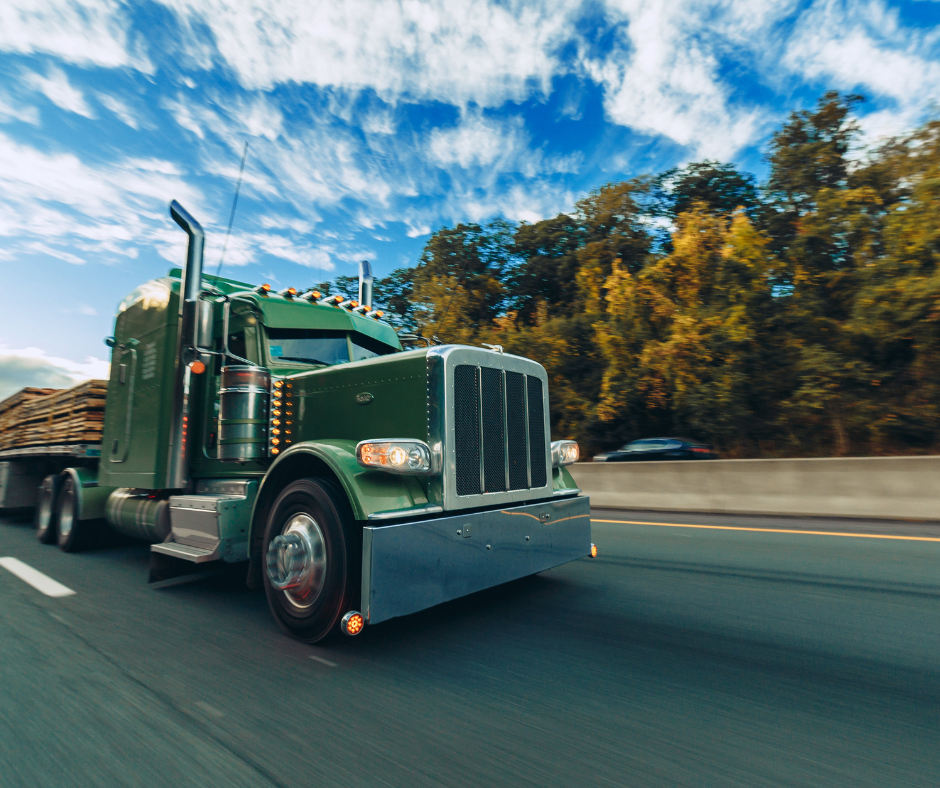The Strategic Placement of Triangles: A Truck Driver's Safety Essential
- Samantha Allen & Dr. Sean Goffnett

- Sep 21, 2023
- 3 min read
Updated: Oct 5, 2023
Safety is a truck driver’s top priority, not just for themselves but for everyone sharing the highways. One often overlooked safety measure is the proper placement of triangles, also known as reflective warning triangles. Let’s explore why triangles matter and how truck drivers can use them strategically to enhance safety.

What Are Reflective Warning Triangles?
Reflective warning triangles are portable, highly visible devices designed to alert other motorists of a stopped or disabled vehicle. They typically consist of three red reflective equilateral triangles, which can be placed in a configuration to warn approaching drivers of a hazard. These triangles are a staple in any truck driver's in-vehicle safety equipment.
The Strategic Use of Triangles
1. Emergency Stops and Breakdowns
Truck drivers often find themselves in situations where they need to pull over for emergency stops or due to vehicle breakdowns. Placing triangles at strategic locations is crucial in locations such as on divided highways or one-way roads:
The first triangle should be 10 feet behind the vehicle on the traffic side of the CMV.
The second triangle should be positioned approximately 100 feet behind the vehicle in the center of the lane or shoulder that the CMV occupies.
Another triangle should be placed 200 feet behind the vehicle in the center of the lane or shoulder it occupies. This early warning gives approaching drivers ample time to slow down and change lanes safely.

For stops on two-way roads that are undivided, the proper procedure is as follows:
The first triangle should be placed 100 feet in front of the vehicle in the center of the traffic lane or shoulder occupied by the CMV and in the direction of approaching traffic.
The second triangle should be 10 feet behind the vehicle on the traffic side of the CMV.
Another triangle should be placed 100 feet behind the vehicle in the center of the lane or shoulder it occupies.

There may be a scenario where a driver is forced to stop on a hill or curve with an obstructed view. This is very dangerous and it is crucial that the driver properly place the triangles in the following manner:
The first triangle should be placed 100 feet in front of the vehicle in the center of the traffic lane or shoulder occupied by the CMV and in the direction of approaching traffic.
The second triangle should be 10 feet behind the vehicle on the traffic side of the CMV.
Another triangle should be placed between 100 feet and 500 feet down the road behind the vehicle in the center of the lane or shoulder it occupies (the maximum distance from the vehicle shall not exceed 500 feet).

Regulation for triangle use in residential or business districts is as follows:
Title 49 CFR 392.22 The placement of warning devices is not required within the business or residential district of a municipality, except during the time lighted lamps are required and when street or highway lighting is insufficient to make a commercial motor vehicle clearly discernable at a distance of 500 feet to persons on the highway.
2. Nighttime Visibility
Visibility is significantly reduced at night, making triangles even more critical. Reflective material on the triangles ensures they remain visible in low-light conditions when headlights hit them. Truck drivers often carry flashlights or flares and wear clothing with reflective features to further enhance their visibility when placing triangles in the dark. Driver should carry the triangle’s reflective side out towards oncoming traffic to increase visibility.
3. Compliance with Regulations
Safety regulations often mandate the use of reflective triangles in commercial vehicles. Compliance with these regulations is not just about avoiding fines; it's about ensuring the safety of everyone on the road. Failure to use triangles can lead to accidents, especially in high-speed traffic.
The strategic placement of reflective warning triangles is a safety essential for truck drivers. Truckers can protect themselves, their vehicles, and all other road users by following proper triangle placement procedures. Motorists that understand the placement and importance of these triangles can do their part to keep truck drivers safe.
Ready to START, DRIVE, & ACCELERATE your trucking business? Check out our course here!

Interested in being notified when more free resources are available? Subscribe down below and you'll be the first to know!
Soshaul Logistics LLC and its affiliates do not provide tax, legal or accounting advice. This material has been prepared for informational purposes only, and is not intended to provide, and should not be relied on for, tax, legal or accounting advice. It is meant to serve as a guide and information only and Soshaul Logistics, LLC does not assume responsibility for any omissions, errors, or ambiguity contained herein. Contents may not be relied upon as a substitute for the FMCSA's published regulations. You should consult your own tax, legal and accounting advisors before engaging in any transaction or operation.




Comments